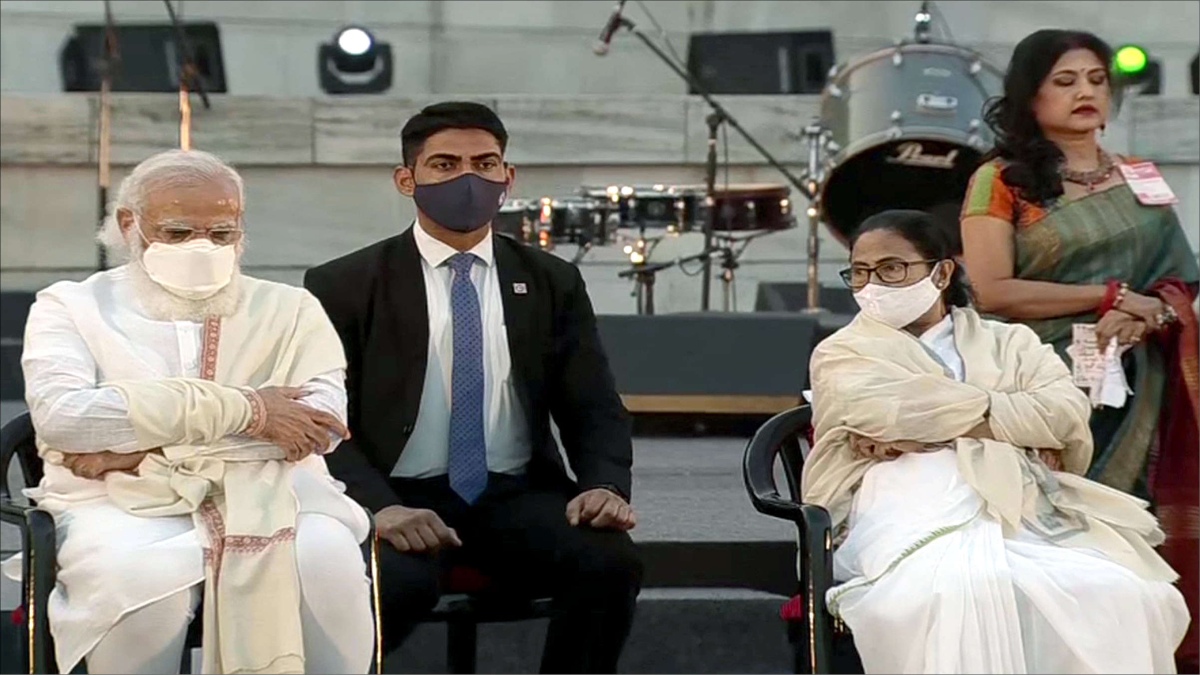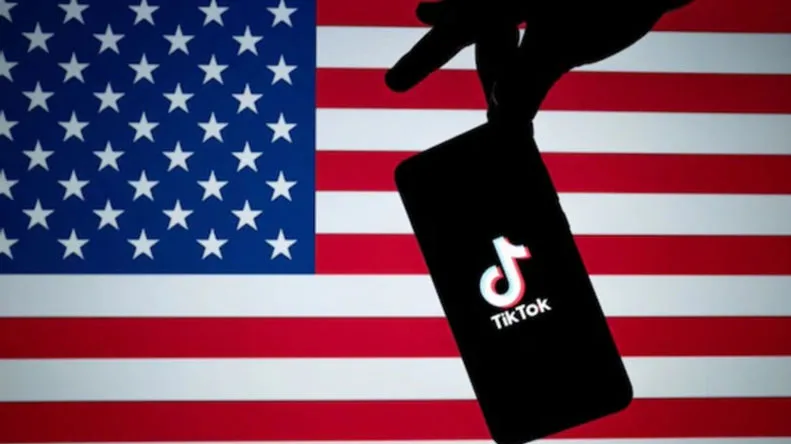Why does West Bengal Chief Minister Mamata Banerjee get so irritated by the chant of ‘Jai Shri Ram’? Does she feel that at a time when the whole country is jubilant at the start of construction of the grand Ram temple in Ayodhya, being seen as an opponent of Lord Ram would polarise Muslims towards her. In doing so, does she forget that Lord Ram is ancestor of even Muslims who got converted into Islam a few centuries back.
The way she reacted at a function at Victoria Memorial on 23 January, the birth anniversary of Netaji Subhas Chandra Bose, left a bad impression about her understanding of India’s cultural ethos. What is the big deal if some people from the audience shouted ‘Jai Shri Ram’? There is no constitutional bar on shouting such slogans at a government function. The slogan of ‘Bharat Mata Ki Jai’ was also heard. Some security people were even seen dissuading the crowd from chanting. Instead of using the opportunity to address the audience, she found the chanting by a section of the people gathered there insulting. She refused to speak further after lodging her protest.
This is not the first time she has reacted in this fashion. In May 2019, some people had shouted ‘Jai Shri Ram’ when she had passed through the Bhatpara area of the 24 North Parganas district, the scene of the violence between BJP and Trinamool Congress workers after the Lok Sabha results gave the BJP an impressive victory. Banerjee had gotten infuriated, come out of the car and shouted back at them, then asked her officials to note down their names.
“What do you think of yourself? You will come from other states, stay here and abuse us? I will not tolerate this. How dare you all abuse me? All of your names and details will be noted down,” she had said angrily. When she had gotten into the car, people had repeated the chant and she had come out again, visibly upset and angry. More than half a dozen people had been detained.
How can such a slogan be an abuse? Is it then Banerjee’s truth that opposing the ‘Shri Ram’ chant is akin to opposing the BJP, since the BJP has been the most vocal supporter of the grand Ram temple in Ayodhya? The logical extension of this would be that those opposed to the BJP would support her opposition to the chant of ‘Jai Shri Ram’. At a time when the state is going to witness an assembly election, this is her desperate attempt to safeguard her Muslim vote bank that is facing division due to the rise of local Muslim political players.
But this sort of politics may boomerang against her. An average person in the state would be surprised by her disproportionate response. Lord Ram to them is a god as well as a cultural figure. He is the symbol of good and virtuosity, and represents the ultimate moral values that define humanity and makes possible the betterment of human society. In Him, they find how one should be as a member of family and how one should behave as a ruler. Death rituals are incomplete without the name of Ram (“Ram naam satya hai” means “the name of Lord Ram is the ultimate truth”). When the values of one person, whom Hindus consider as God, pervades society so much, how can one object to chants of His name?
Does Banerjee not know this reality about India? Of course, she does! But she is victim of her own communal politics. It is this communal mindset that makes her substitute ‘Ram’ with ‘rong’ in ‘ramdhenu’ (rainbow) and ‘aasmani’ for ‘aakashi’ (of the sky) in school textbooks. This is her way of secularising the cultural symbols of West Bengal. She has gone on to stay the tradition of immersing Durga idols so that Muharram processions could take precedence. She has no problems with the use of arms and self-inflicting injuries during Muharram, but has problems with Shashtra Puja during Dussehra.
In her appeasement of the Muslim community, she has crossed all barriers. And this time she has been completely exposed, forcing her to retract and issue a statement that she has no problems with the chant of ‘Jai Shri Ram’. But now she can’t avoid being greeted by this chant in every nook and corner of the state. Street urchins and other people are likely to tease her by chanting this. This chant is going to reverberate throughout the election period in her state. People have discovered a non-lethal weapon to use against her. While some will do it for fun, others, mostly BJP workers, will do so to challenge her communal politics.
There are some cynics who often try to compare the chant of ‘Jai Shri Ram’ with ‘Allah Hu Akbar’. They are not the same. The latter has been historically used as a war cry to demolish and destroy non-believers in Islam. The former has never been used as a war cry despite being of a more ancient origin. The war cries often heard in Hinduism are ‘Har Har Mahadev’, ‘Jai Mahakali’ or ‘Jai Bajrang Bali’. The Sikhs’ chant, ‘Jo Bole So Nihal, Sat Sri Akal”, also falls under that category.
The eye-opener for Banerjee should be the donation campaign started for construction of the grand Ram temple in Ayodhya. People have so much love and respect for Ram that within two days of the appeal for donations for the construction, the Ram Janmabhoomi TeerthKshetra Trust has received Rs 100 crore. The President of India, Ram Nath Kovind, has donated Rs 5,00,100 from his personal account.
If pandemonium and conflicts in the country rise, the support for building such a temple—that will be an epitome of love, peace and righteousness—will only increase. Righteousness is dharma. The figure of God for Hindus has no enemy because this is the oldest religion and one that does not speak against anyone. It did not have to compete since other religions did not exist then. Thus, Lord Ram spoke for all of humanity.
Lord Ram lives in the consciousness of the average Indian. The traditional form of greeting in the country in place of “Namaste” used to be “Ram Ram” and other variants. If a politician fails to understand this, he or she would do so at his own peril. West Bengal is no different. People will come and go but Lord Ram and the ideals He represents will stay till eternity.
The writer is convener of the Media Relations Department of the BJP and represents the party as a spokesperson on TV debates. He has authored the book ‘Narendra Modi: The Game Changer’. The views expressed are personal.
There are some cynics who often try to compare the chant of ‘Jai Shri Ram’ with ‘Allah Hu Akbar’. They are not the same. The latter has been historically used as a war cry to demolish and destroy non-believers in Islam. The former has never been used as a war cry despite being of a more ancient origin. The war cries often heard in Hinduism are ‘Har Har Mahadev’, ‘Jai Mahakali’ or ‘Jai Bajrang Bali’. The Sikhs’ chant, ‘Jo Bole So Nihal, Sat Sri Akal”, also falls under that category.























